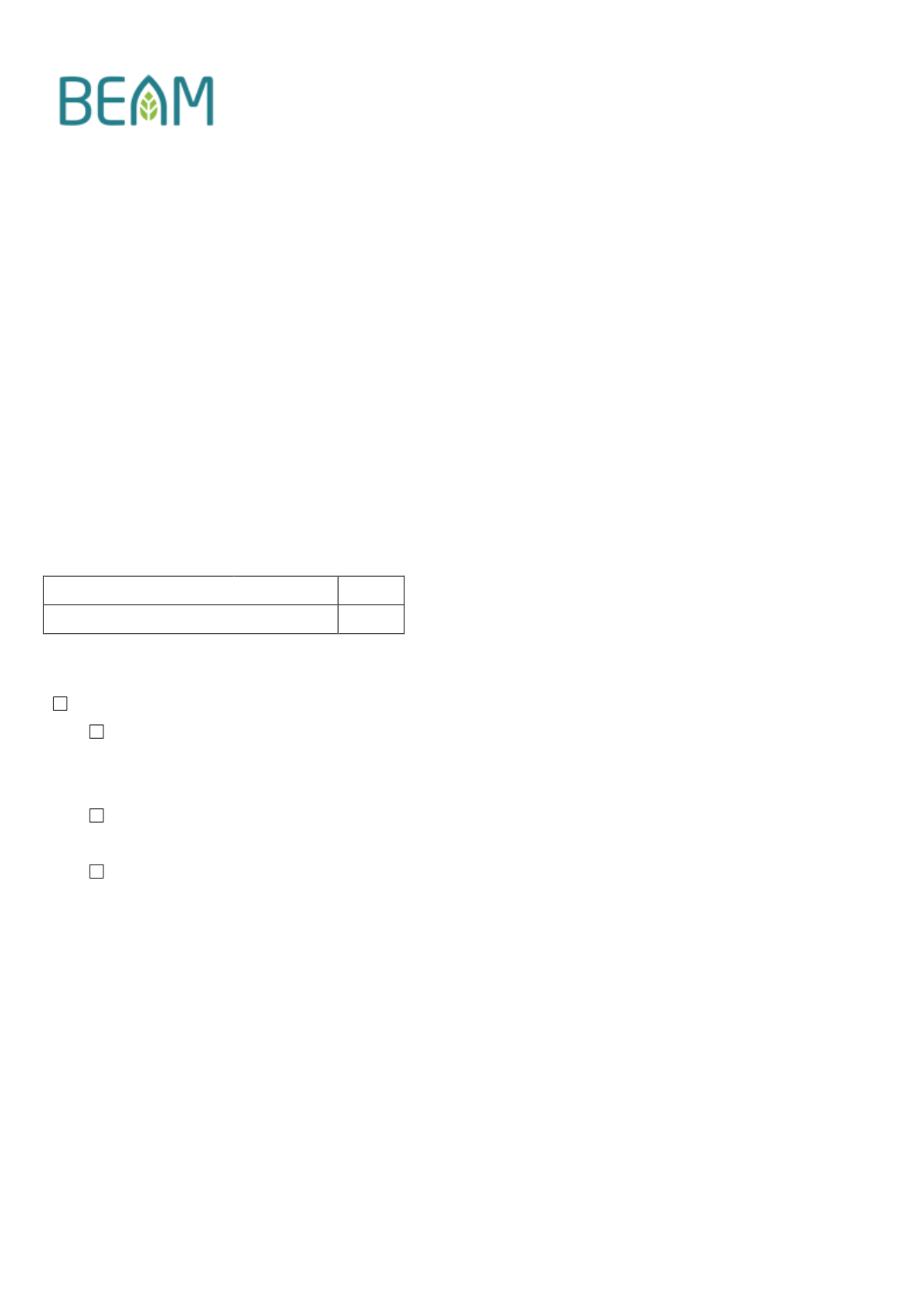

BEAM Plus Interiors
Commercial, Retail and Institutional
Submission Template for IEQ 1
Indoor Air Quality
Copyright © 2013 BEAM Society Limited. All rights reserved.
Page 1 of 3
Credit Requirements:
A) Specifications Approach
For each of the materials categories (A1 to A5), 1 credit is achieved when compliance
is demonstrated through submission of the requisite documentation.
A1. Adhesive and sealants; A2. Paints, coatings and finishes; A3. Wood and
laminates; A4. Flooring materials and Carpets; and A5. Furniture.
Alternatively,
B) Measurement Approach
For each of the categories of contaminants (B1 to B5), 1 credit is achieved if
measured concentrations obtained through appropriate measurements comply with
the GOOD class requirement of the Indoor Air Quality (IAQ) Certification Scheme
B1. Total volatile organic compounds (TVOCs); B2. Formaldehyde (HCHO); B3.
Products of combustion: carbon monoxide (CO), nitrogen dioxide (NO
2
); B4.
Respirable Suspended Particulate (RSP, PM
10
); and B5. Ozone.
Credit Attainable:
5
Credit(s) anticipated for this submission:
BEAM Plus criteria:
A) Design Approach
A1. The VOC content limits of the adhesives, sealants and sealant primers used in the project interiors
should be less than the maximum limit given in Annex 6 of “A Guide to the Air Pollution Control (Volatile
Organic Compounds) Regulation” issued by Environmental Protection Department.
A2. The VOC content limits of paint paints, coatings and finishes used in the project interiors should be less
than 50g per litre.
A3.
i. Composite wood and fibre products shall not contain any added urea - HCHO resins; and
ii. Adhesives used to fabricate assemblies shall not contain any added urea - HCHO.
The list of all products and laminate adhesives used shall be accompanied by a statement that they contain
no added urea – HCHO.


















